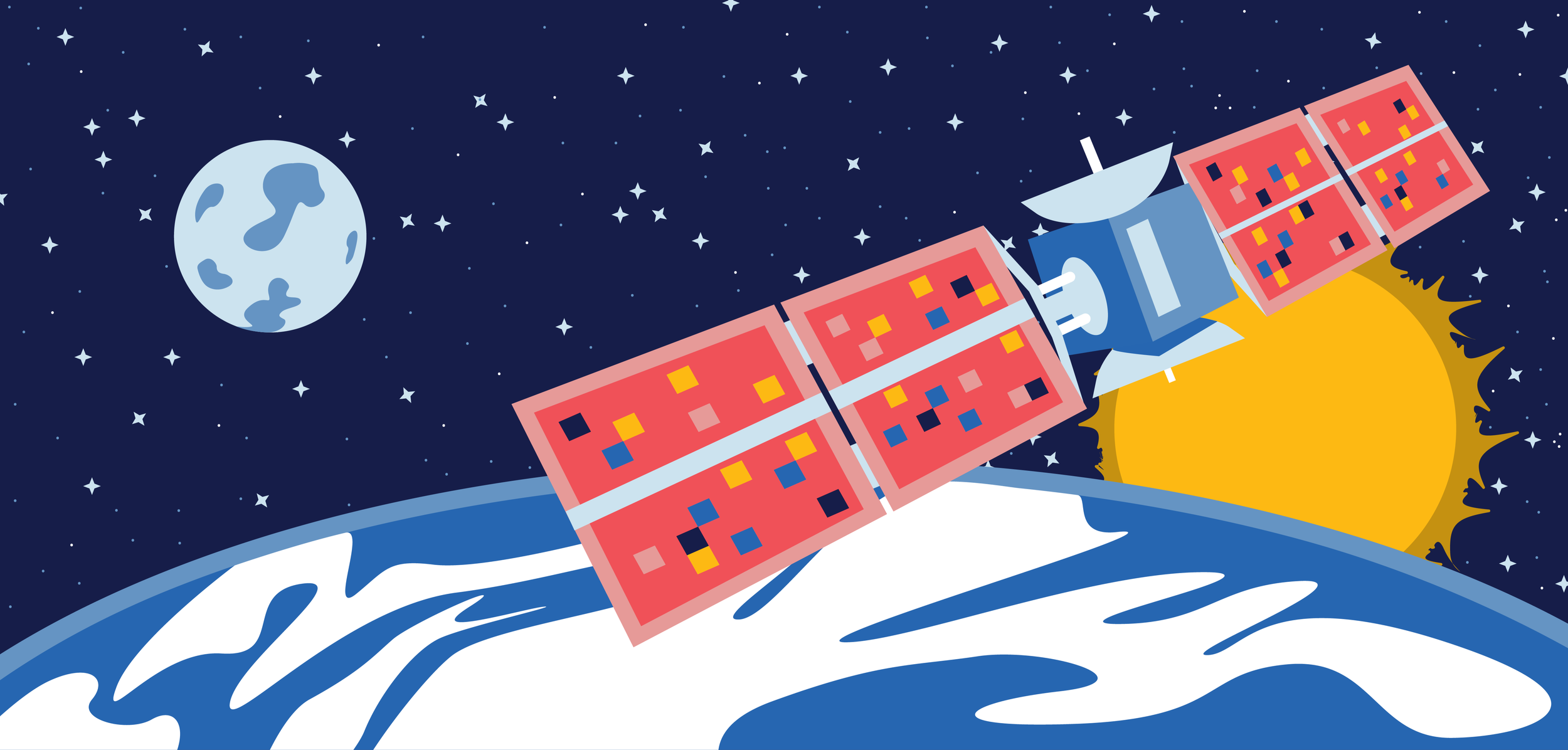Securing Satellites and Sensors: The Benefits of Remote Capabilities
Lead with Speed: Maintaining Space Superiority from the Ground Up
In a world where satellites, sensors, and data flow effortlessly and securely, remote communications become possible. This happens through the Internet of Things (IoT), a network of physical objects equipped with sensors, software, and processing capabilities that exchange data with other devices and systems.
Collecting and Securing Satellite Data at the Edge
Every day hundreds of millions of people interact with IoT sensors—even if they don’t realize they’re doing so. This can happen through laptops, smartphones, refrigerators, coffee machines, Apple watches, and countless other devices.
Any device equipped with an internet connection and sensors can be used for IoT applications. Whether it's IoT sensors in your home appliances, motion detectors that are part of your doorbell camera, or the sophisticated sensors used in military applications, securely collecting and sensing data is increasingly crucial.
As the world becomes more and more connected through the use of IoT technology, securing these devices is more important than ever. This is particularly true of satellite data, which is often sensitive, confidential, and critical to a myriad of operations–from communication and navigation to Earth observation.
By adding IoT sensors to satellite ground stations, we can gather real-time data on things like wind speed, humidity, weather conditions, and electrical availability. This data can then be efficiently collected, processed, and distributed through mobile applications used by air operators, including Air Force maintainers. By integrating these technologies, we can provide the entire workforce with up-to-date information on asset availability, ensuring smooth operations and improved decision-making, whether from headquarters or in the field.
Building a Secure Future: IoT and Zero Trust
Satellites, sensors, and all the data flowing between each device and its end point is how we are able to communicate remotely. Remote satellites and sensors generate data where work is being done—this is called Edge Computing. With IoT and Edge, providing up-to-the second-information to everyone that needs to know—no matter where in the world they are—is possible.
But it’s critical that security is also baked in.
Enter Zero Trust, a strong security ethos that assumes any asset, user, or resource is untrustworthy and must be verified and continually evaluated at every session before access is granted. Furthermore, Zero Trust and IoT pair together perfectly as each address separate aspects of computing ecosystems and cybersecurity. While IoT focuses on the interconnection of data among various networks, Zero Trust revolves around protecting against internal and external threats through strict authentication and authorization controls. When used together, these security frameworks become much more powerful.
Expanding the Role of Zero Trust in Securing Satellite Data
When it comes to handling highly sensitive information and critical systems, military satellite maintainers and operators need robust security measures. With a Zero Trust approach, a range of security controls can be easily implemented, from multi-factor authentication and encryption to network segmentation. These measures ensure only authorized users and devices can access the systems and data necessary for their tasks, reducing the risk of unauthorized access or manipulation.
The benefits don't end there. Zero Trust also enables continuous monitoring and risk assessment, allowing maintainers and operators to swiftly detect and respond to security incidents. This is especially crucial in the satellite industry, where any disruption to satellite operations or communications can have far-reaching consequences on the integrity and security of critical systems and data.
What Satellite Data Needs to be Secured and Why
Satellite data that’s sensitive, confidential, or critical to the operation of the satellite or the systems it supports must be secured. This may include:
Telemetry data: Provides information about the status and performance of the satellite, including the satellite's position, speed, orientation, power usage, and system health. This data needs to be secured to prevent unauthorized access or manipulation, which could compromise the performance or integrity.
Imaging data: Provides high-resolution images of the Earth's surface, which can be used for a range of applications, including military surveillance, scientific research, and commercial mapping. This data needs to be secured to protect sensitive or confidential information, like the location of military installations or the activities of private individuals or businesses.
Communications data: Includes voice, video, and data transmissions, which may be confidential or sensitive. This needs to be secured to protect the privacy of communications and prevent unauthorized access or interception by third parties.
Command and control data: Includes instructions for controlling the satellite's operations, such as adjusting its orbit or activating its systems. This data needs to be secured to prevent unauthorized access or manipulation, which could compromise safety and performance.
Achieve Rapid Superiority from the Ground up with Trusted Data and Advanced Technology
Implementing hardware-based cryptography is crucial to secure sensitive data transmitted between devices like satellites. Find out how Monkton products can help.
Anchorage is a patented Zero Trust technology providing immutable proof of a device's identity at the hardware level. Collect and secure sensitive satellite data at the Edge—knowing that the device you are communicating with is the device you deployed.
For satellite operators and maintainers, IoT and Zero Trust can work together to enhance security, while EdgeMX streamlines operations processes from iPhones, iPads, Apple TVs, Apple Watches, and Apple Vision Pro (Apple's first spatial computer). With these powerful technologies, data can be securely stored, processed, and distributed in and from the cloud, arming teams with real-time information that allows them to make more informed decisions.
Ready to deploy? Hypersonic helps you achieve swift Cloud Native development, deploying Serverless and Platform as a Service solutions designed for Edge Computing. Our DevSecOps tool ensures day-one production capability, meeting DoD SRG IL-5 and FedRAMP HIGH Controls.
Mobility for Space
Our increasing reliance on remote communication has made protecting satellite data even more critical. By providing future-proofed solutions that are secure from the start, Monkton can tackle the complex challenges of today while helping our clients prepare for the needs of tomorrow.







